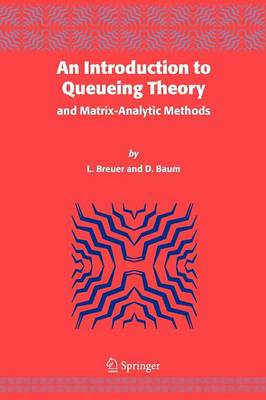The present textbook contains the recordsof a two-semester course on que- ing theory, including an introduction to matrix-analytic methods. This course comprises four hours oflectures and two hours of exercises per week andhas been taughtattheUniversity of Trier, Germany, for about ten years in - quence. The course is directed to last year undergraduate and?rst year gr- uate students of applied probability and computer science, who have already completed an introduction to probability theory. Its purpose is to present - terial that is close enough to concrete queueing models and their applications, while providing a sound mathematical foundation for the analysis of these. Thus the goal of the present book is two-fold. On the one hand, students who are mainly interested in applications easily feel bored by elaborate mathematical questions in the theory of stochastic processes. The presentation of the mathematical foundations in our courses is chosen to cover only the necessary results, which are needed for a solid foundation of the methods of queueing analysis. Further, students oriented - wards applications expect to have a justi?cation for their mathematical efforts in terms of immediate use in queueing analysis. This is the main reason why we have decided to introduce new mathematical concepts only when they will be used in the immediate sequel. On the other hand, students of applied probability do not want any heur- tic derivations just for the sake of yielding fast results for the model at hand.
- ISBN13 9789048169139
- Publish Date 19 October 2010 (first published 7 November 2005)
- Publish Status Active
- Publish Country NL
- Imprint Springer
- Edition Softcover reprint of hardcover 1st ed. 2005
- Format Paperback
- Pages 272
- Language English
